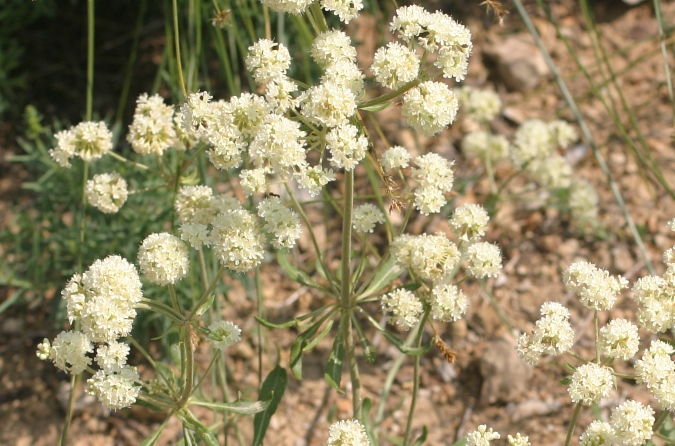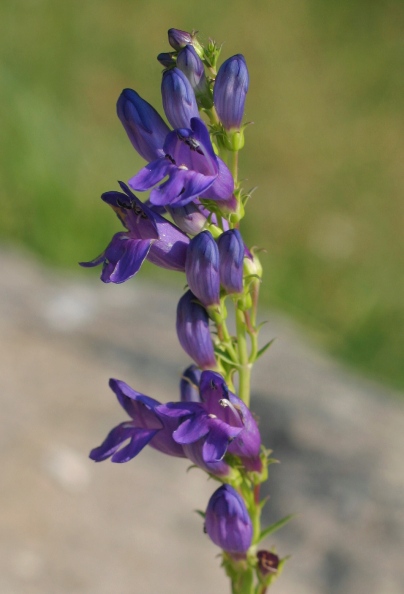Below, two Yucca species – the famous and striking Yucca brevifolia, also known as ‘Joshua Tree’, in the Virgin River Gorge in the most northwestern corner of Arizona just outside Utah and Yucca baccata, the banana yucca, in Snow Canyon State Park.
Below, Datura wrightii, (Sacred Datura) of the Solananceae, blooming in large clumps, Snow Canyon Sate Park, Washington Co., Utah. This species ranges well into Mexico and is about at the northern end of its range in southern Utah. The moths that nectar on Datura are mostly Sphingidae, hawkmoths or hummingbird moths. Among the most common visitors are Agrius cingulata, a sphingid with considerable pink markings on abdomen and wings, and then several sphingids in the genus Manduca. The Manduca species use nightshades as the host plant for their caterpillars, including tobacco, tomatoes, and in the case of at least one moth species, Manduca sexta, the caterpillars feeds on Datura wrightii.
Ephedra viridis (Mormon tea), Kodachrome Basin State Park, Shakespeare Arch trail, Kane Co., UT

Coyote melon gourd, Curcurbita palmata, an inedible relative of cucumbers and pumpkins, common along the roadside in Washington Co., Utah.
Penstemon, Castilleja, and Eriogonum from Empire Pass, 9000′ elevation, Wasatch County, Utah.
Penstemon cyananthus, “Wasatch purple beardstongue”
Castilleja sp (perhaps C. applegatei), one of the Indian Paintbrush flowers, with bright red-orange bracts surrounding small greenish flowers.
Eriogonum sp. probably E. heracleoides, the “parsnip flower buckwheat” in the Polygonaceae family. 






